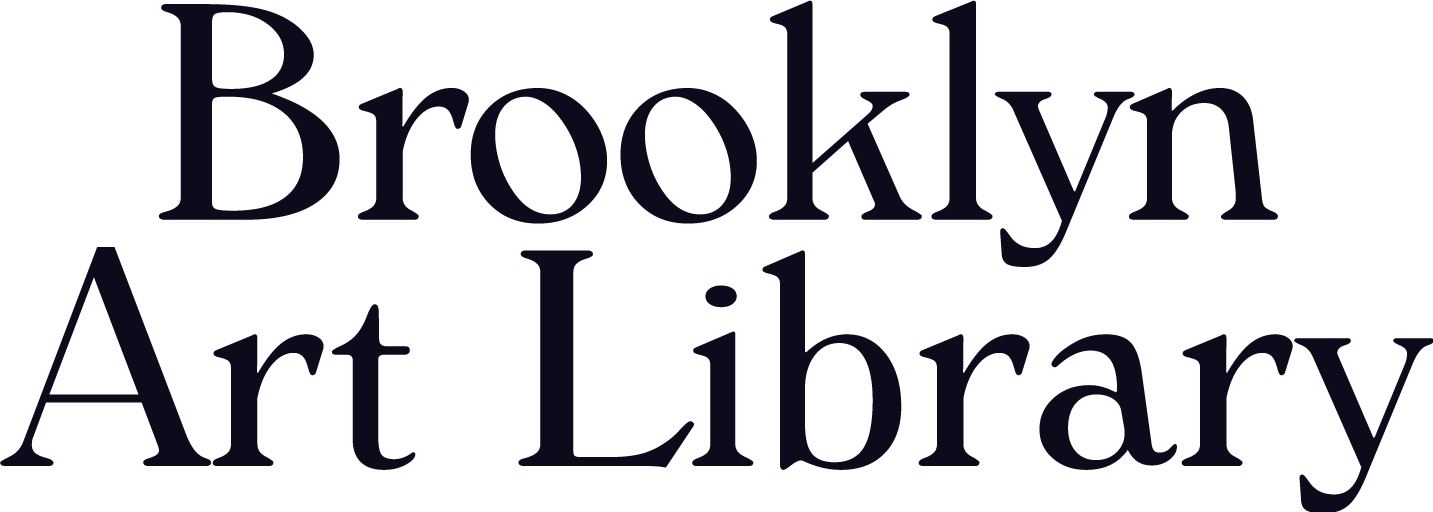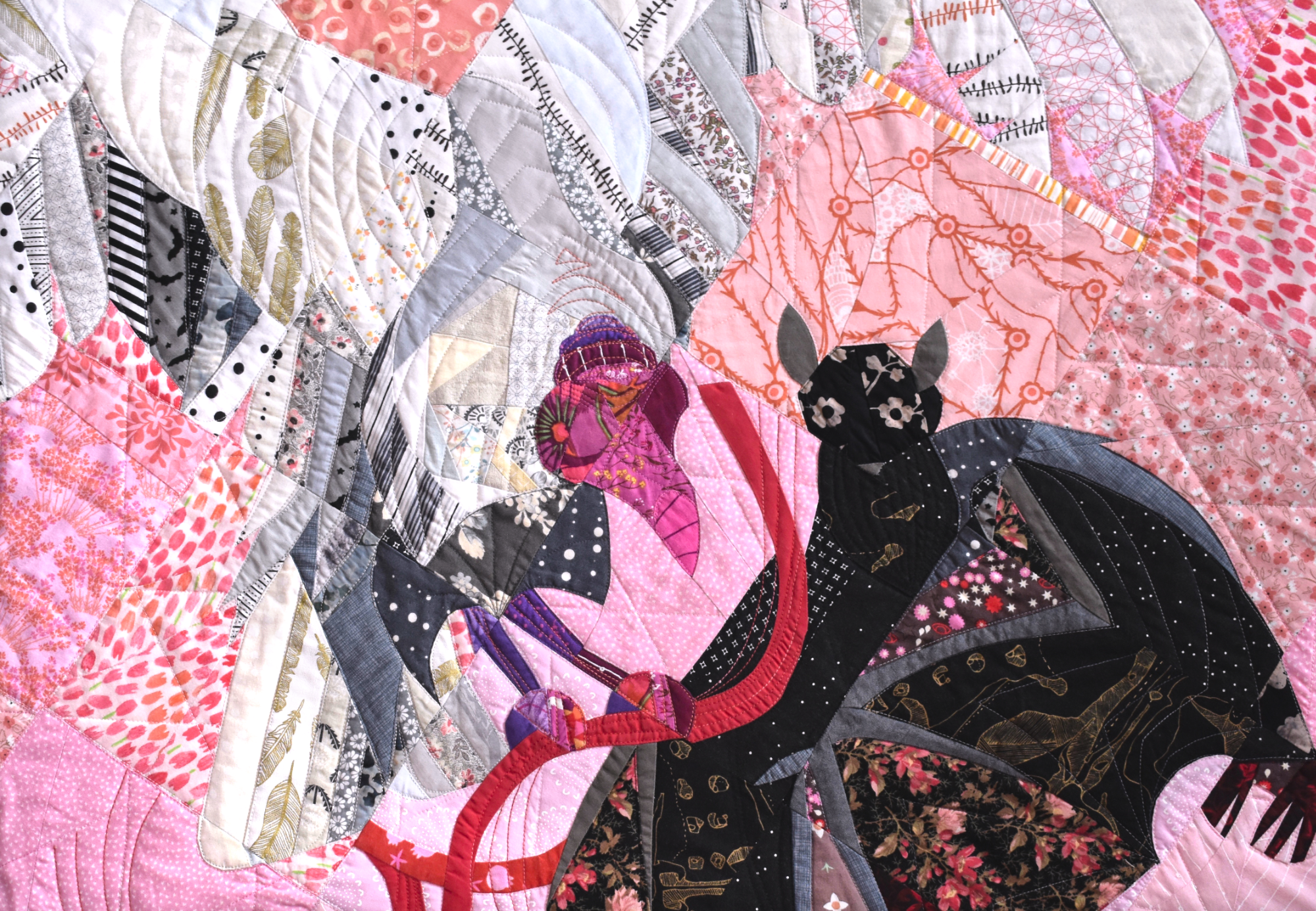Beyond the Page: R. T. Rognstad
R.T. Rognstad is a New Zealand based artist and 2012 Sketchbook Project participant with a background in printmaking and quiltmaking. Rognstad’s work is concerned with the relationship between humans and animals and respect for our shared environment, which is evident in the artist’s dreamlike depictions of humans and animals woven into nature and entwined in rich, vibrant color palettes. Inspiration behind Rognstad’s more recent work can be seen in the artist’s 2012 sketchbook, Look Behind You, which was completed at the time Rognstad was transitioning into quiltmaking. Read on below to learn more about Rognstad’s artistic practice and the ideas and processes that go into creating their elaborate works.
Tell us about yourself!
I’m an American artist raised in southern Missouri before completing my MFA in printmaking in Illinois. In 2013, I immigrated to New Zealand where I have been focused on mostly creating quilts; though I will forever have a soft spot for drawing and illustration. I also design and write patterns for others to make quilt blocks using a method called foundation paper piecing.
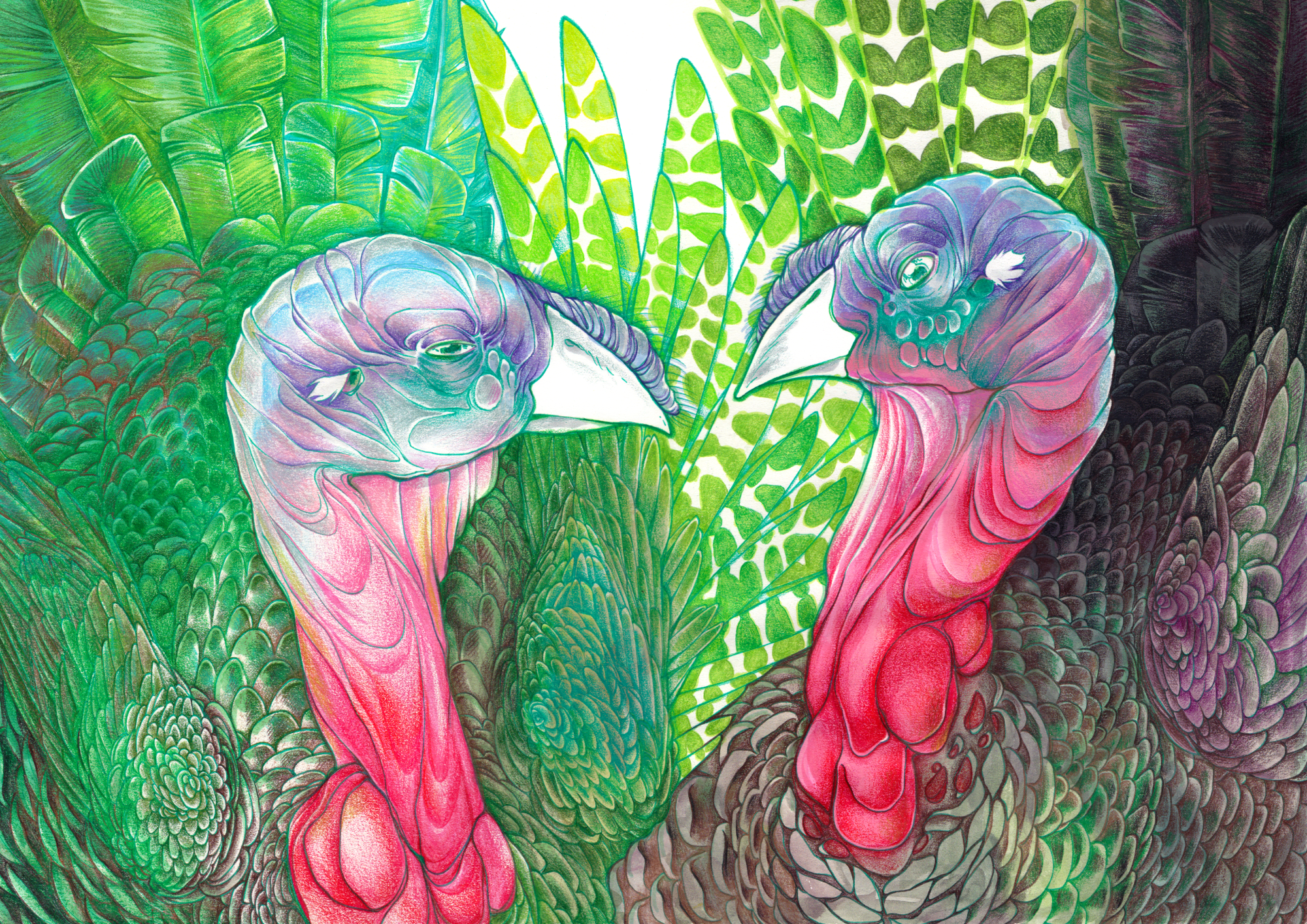
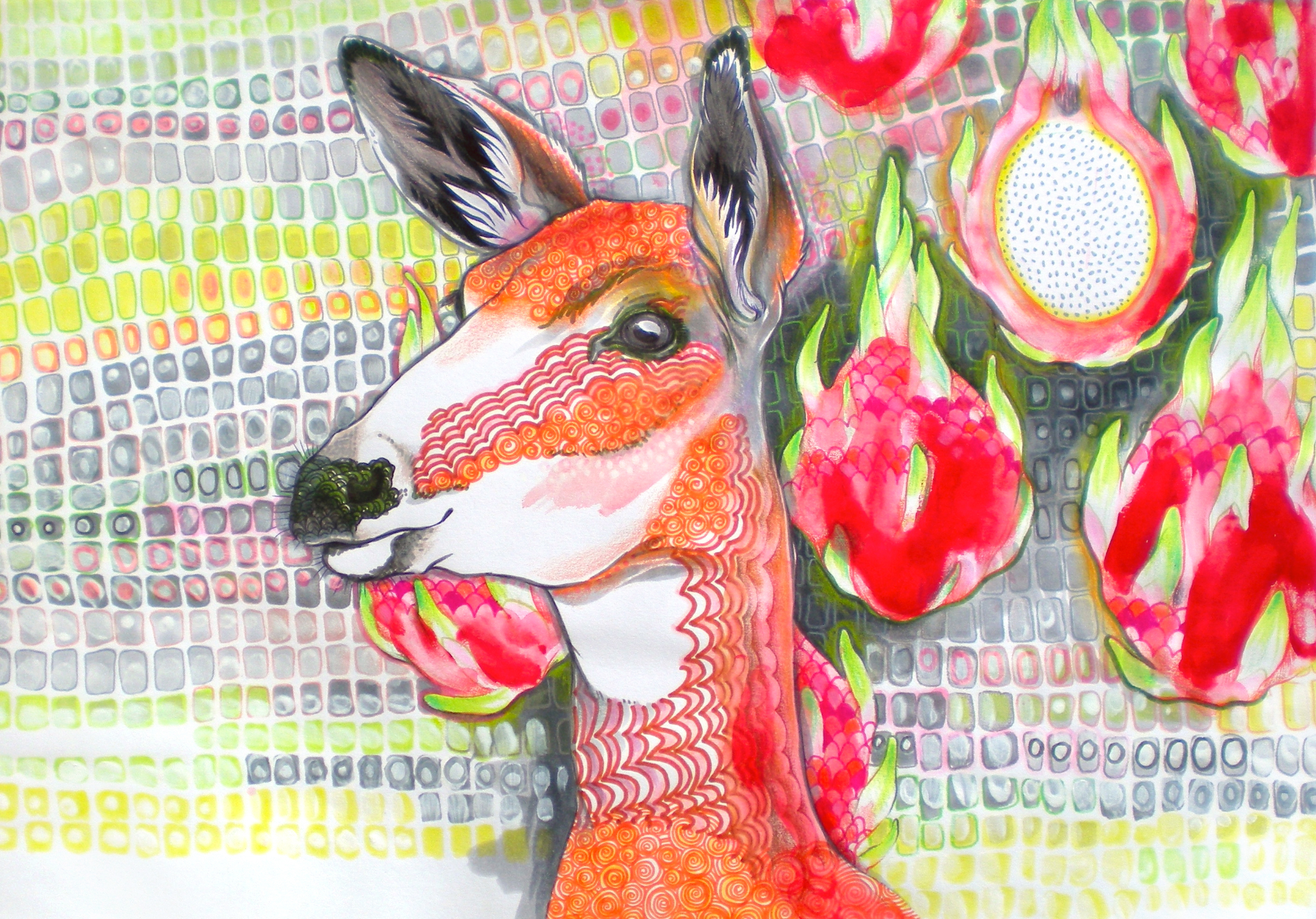
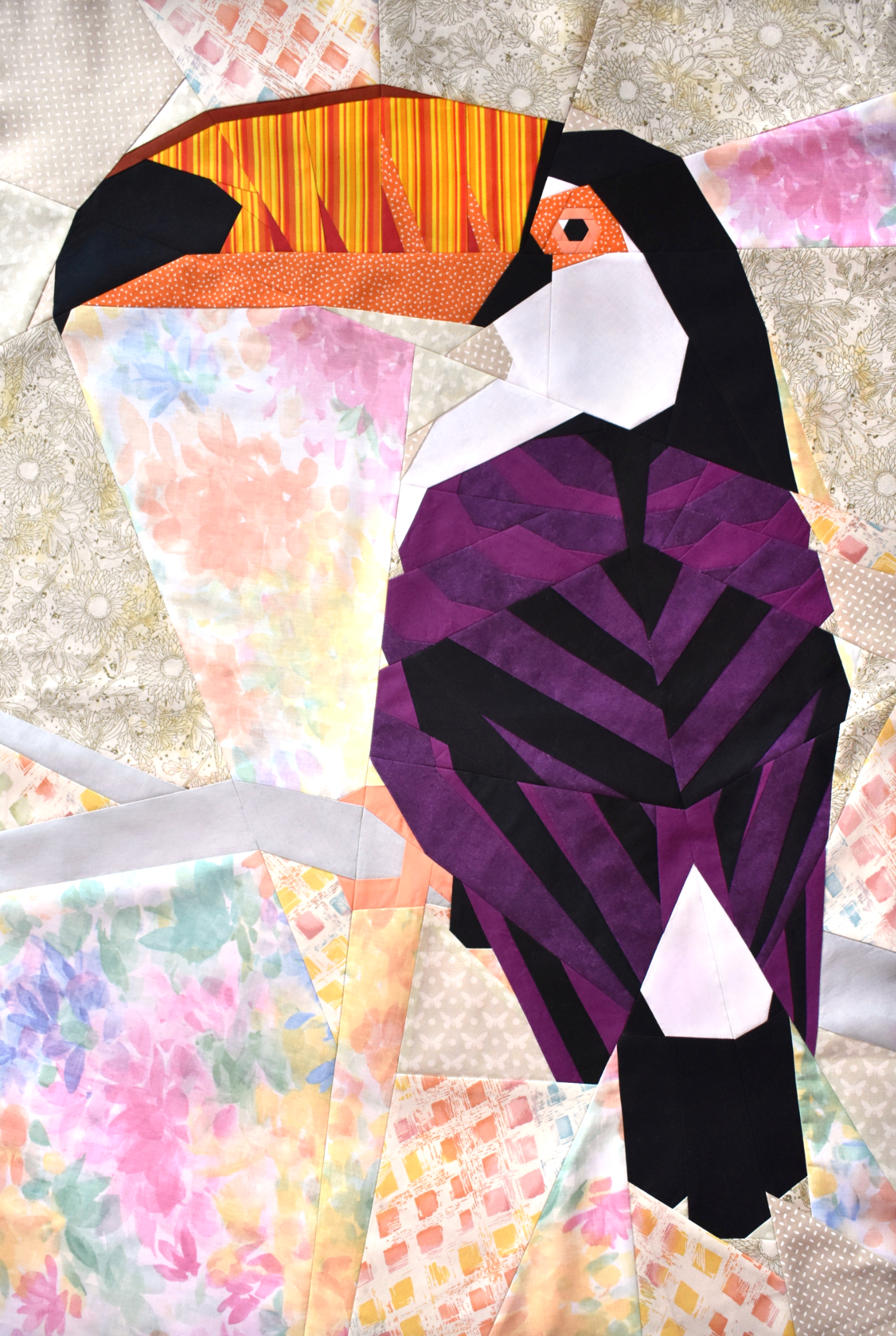
What mediums do you work in now? How do these mediums relate to the concepts in your work?
After completing my masters, I started dabbling in fibers while also trying to pare down the scale and equipment I needed for creating my work. I was interested in quiltmaking because my great grandmother was a quiltmaker and the utilitarian nature of quilts appealed to me, but I knew almost nothing about the process. I’d also inherited a large quantity of fabric scraps from one of my classmates which were tactilely inspiring by their sheer physical presence. Fabric has a great history to it; even if bought new, it tends to linger for months or occasionally years in a drawer or on a shelf, and once I cut into it, the scraps bleed into future projects and carry a memory of what was created previously.
This parallels with my concept of looking at things humans have done conventionally with a fresh perspective and re-examining why these traditions have persisted. Quiltmaking has a very strong tradition behind it but has always had space for using the techniques in inventive ways, even if the motivation for that invention was thriftiness or lack of access to typical materials. Similarly, humans collectively need to evaluate how we approach our daily routines and our symbiosis with the natural world to ensure our mutual persistence.
When did you participate in the Sketchbook Project? What was that process like for you?
I took part in the Sketchbook Project: Limited Edition in 2012. I don’t normally have much success committing to keeping a sketchbook, so I wanted to challenge myself and I recall resonating with the theme “Pictures and Descriptions.” I also remember that time as being a transitional period in my work; I had recently decided on quiltmaking as my primary method of creating, but found myself initially quite limited because I lacked a mastery of the process like I had of printmaking and drawing. I struggled with not being able to express my ideas as well as I could previously, and I may have taken my creative frustration out on my Sketchbook Project!
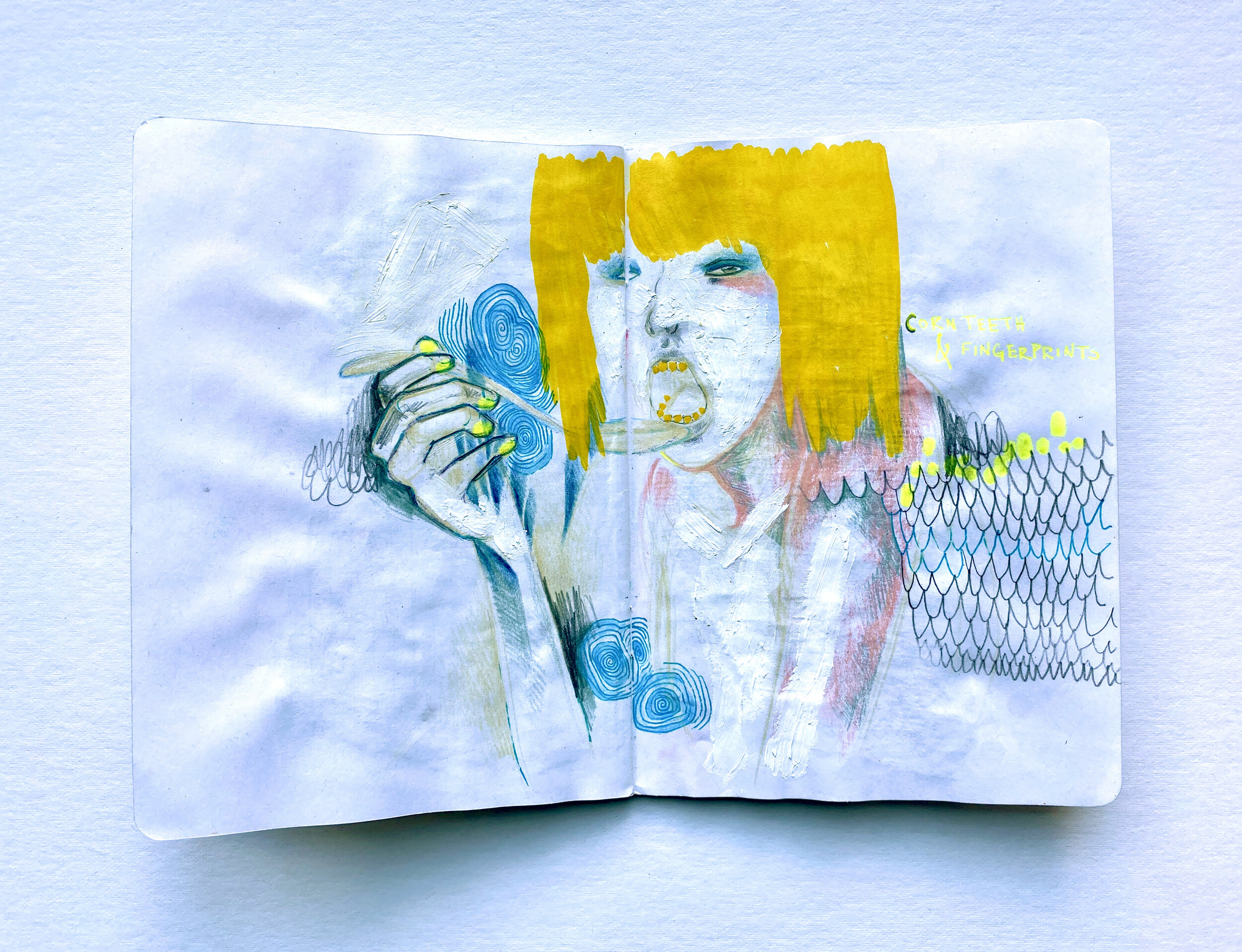
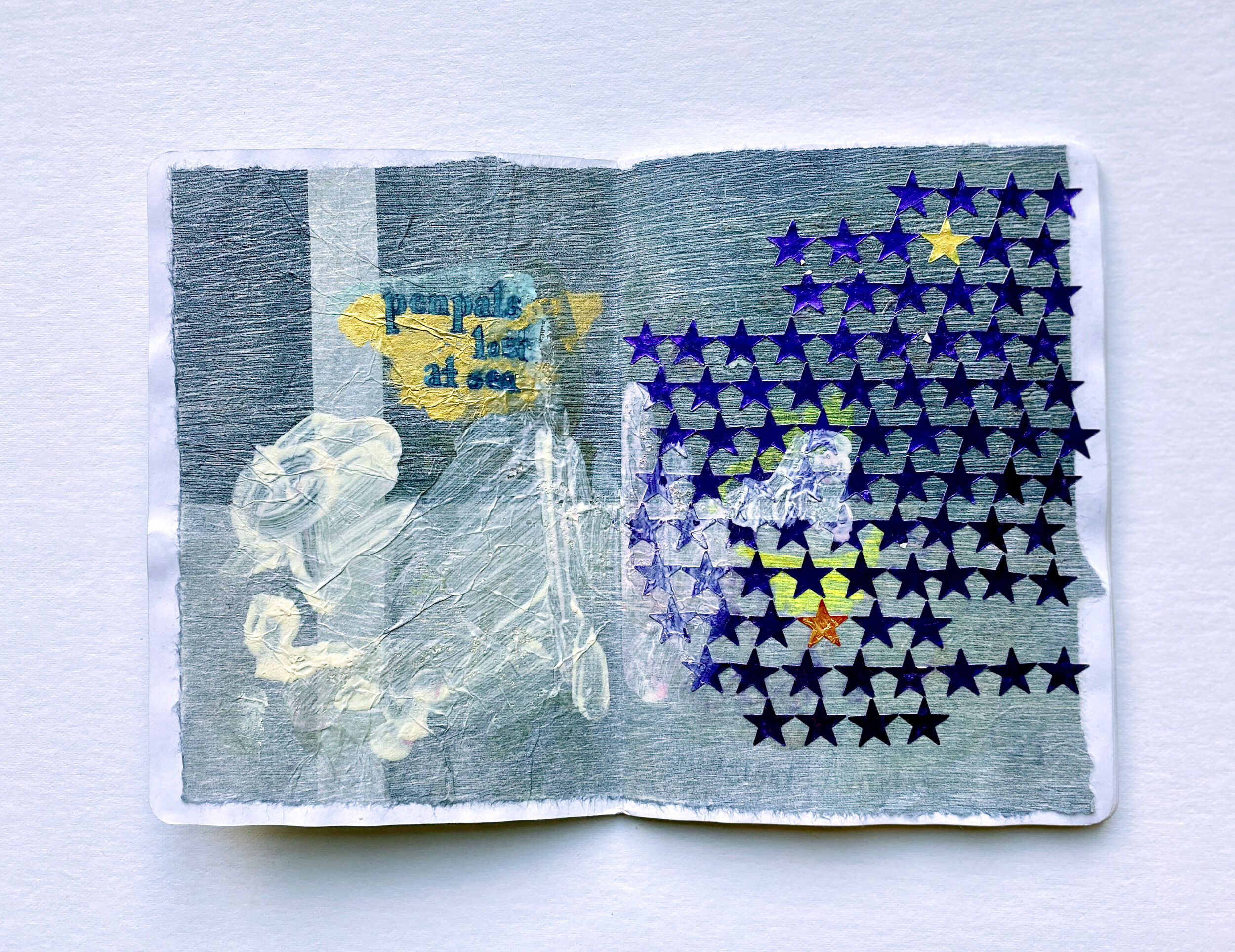
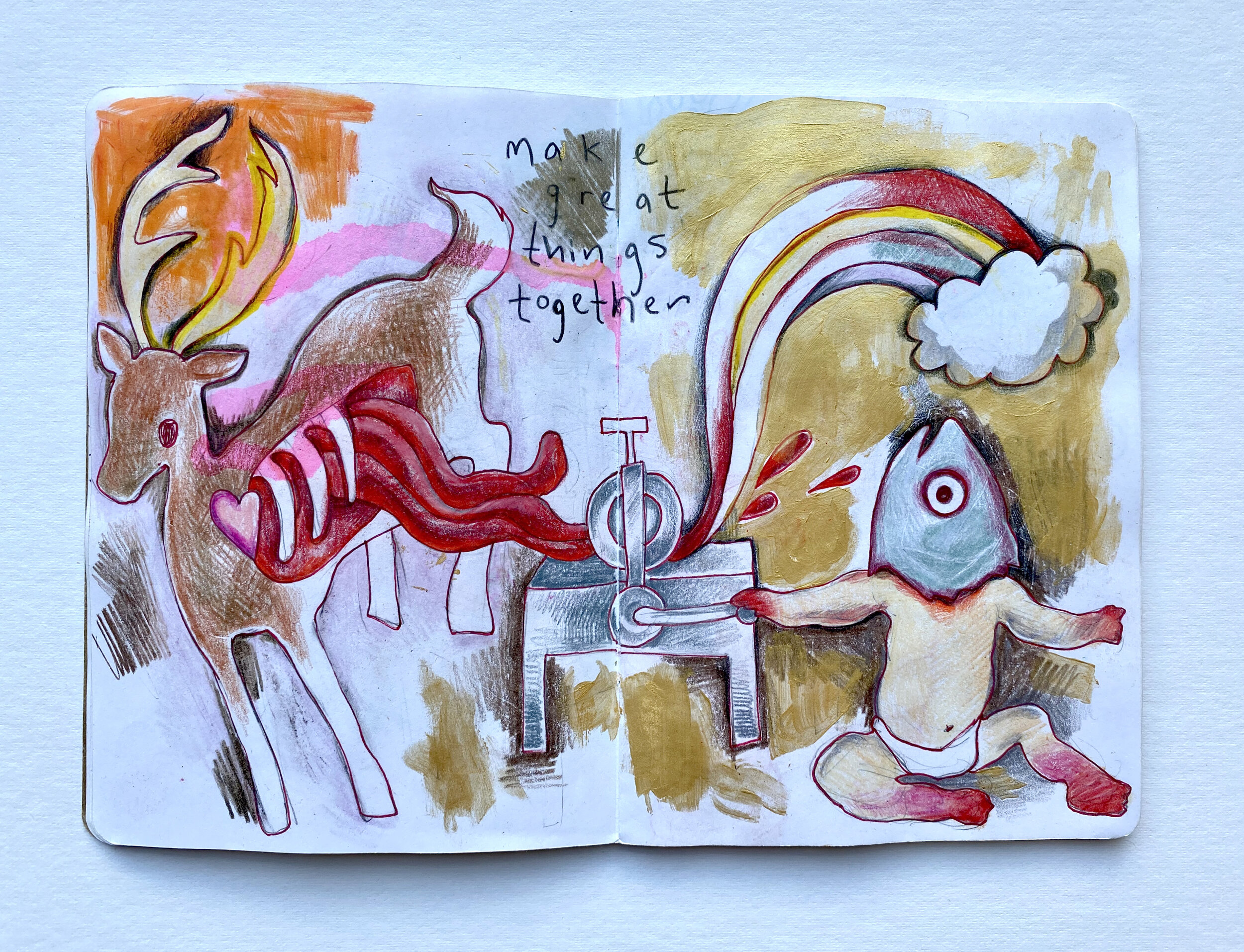
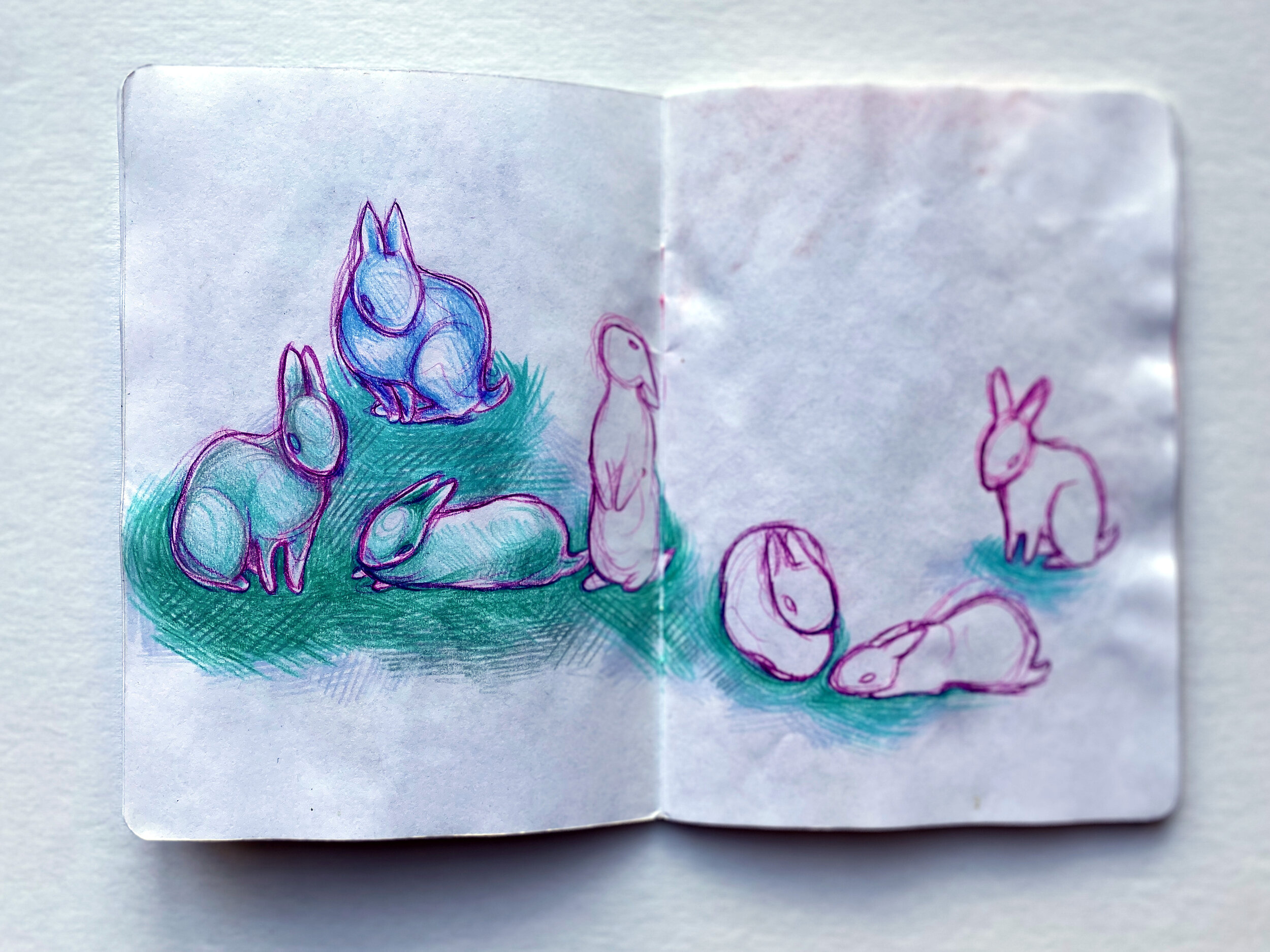
What are sources of inspiration for your work? What is your relationship to animals and nature?
I regularly take inspiration from how animals fit into the human concept of society as well as the question of how to draw attention to animals through aesthetic appeal in order to encourage advocacy. Turkeys often fill the role of animal ambassadors within my work due to their historical conservation issues, their status within the human diet, and the distorted perception many have of their characteristics and habits. These issues we all share: human and non-human animals alike seek to exist and thrive within an environment which is suitable for them, and this can only be achieved through understanding and respect.
As an immigrant, I see now more clearly how this concept applies to humans as well. Moving to a new and foreign place, even the most basic tasks of finding familiar essentials or making my space feel like my home can introduce unexpected challenges toward feeling integrated. Busy compositions with patches of negative space to rest within the disarray and the warm, burrowing nature of rabbits feeds into this overall idea of seeking valued individuality while achieving security as part of a whole.
I appreciate nature but I do not like to spend much time outdoors in it!
How would you describe your practice and approach to art making?
My process is improvisational and responsive, which requires a prompt or quandary to react to. It sometimes begins as a conceptual dilemma, but as I start to create the work, it often becomes an aesthetic problem. With fabric, it’s easier to create this aesthetic problem, especially working with printed fabrics, because visually they become chaotic quite effortlessly. I then have to resolve how to make the prints play nicely together within the limitation of other fabrics available. I find solving this conundrum of conflicting fabrics more rewarding than drawing where the only limitation is my ability to illustrate what I’ve visualized. I’ve always enjoyed puzzles, so this process of starting the piece now and sorting out how to make it work later suits me quite well.
How does your process change when working with textiles vs. digitally or on paper?
The main difference is, with drawing I tend to do linework then fill with color, whereas with fabric I create the blocks of color then pursue the “linework” afterwards by piecing in narrow bias cut strips or through quilting (topstitching). Though, as I’ve been doing more digital work I find I’ve been creating blocks of color first there as well. I think of this more as a painting approach than a drawing approach, which hasn’t always come readily to me, but the same concepts of design apply throughout.
Working with printed fabrics, repetition and pattern can be straightforward, but I have to focus somewhat harder on contrast and space. With drawing, the space is of course already present in the form of whatever I’m drawing on, but it requires more undertaking to build up those textures and patterns.
What advice would you give a 2D artist that wants to experiment with textile art? What are your go-to tools?
Go for it! I find sewing more forgiving than many other two-dimensional mediums because it can be changed both through additive and subtractive methods. I’m routinely cutting pieces apart and sewing them back together to try different arrangements, or plotting how to add more depth and detail with appliqué and topstitching.
Also, don’t get hung up on elements being absolutely straight or square; there are lots of perfectly pieced quilts out there with straight edges and matching points which can be something to strive for, but fibers are organic and malleable and fickle so it’s absolutely acceptable to embrace those qualities.
There are plenty of inventive quilting tools available and new ones popping up all the time; but other than my sewing machine, a rotary cutter and a clear acrylic quilting ruler are my essentials. I’ve been lucky to have used these throughout my artistic career and I’m not sure why they haven’t caught on in other areas. Even working with paper, I find clear quilting rulers a must-have because they make measuring and squaring up so easy and efficient.
What are you working on currently? How have present circumstances impacted you creatively?
This year, I’ve been focusing on concluding unfinished long-term projects and trying to make do with the materials I have (my fabric stash may have exceeded my fabric storage capabilities…). Quiltmaking is a slow-paced, ruminating process, so current events won’t have much effect on the projects I started prior to this year. However, those anxieties and worries are certainly on my mind and I expect they will start to make an artistic appearance once I embark on some new pieces.
How can people support your work?
I am most active as @robynie on Instagram and I’m generally available for group shows, commissioned projects, etc. -- message me! I also livestream drawing and/or sewing twice a week at twitch.tv/robynie where we have a wonderful creative community and every viewer counts!
